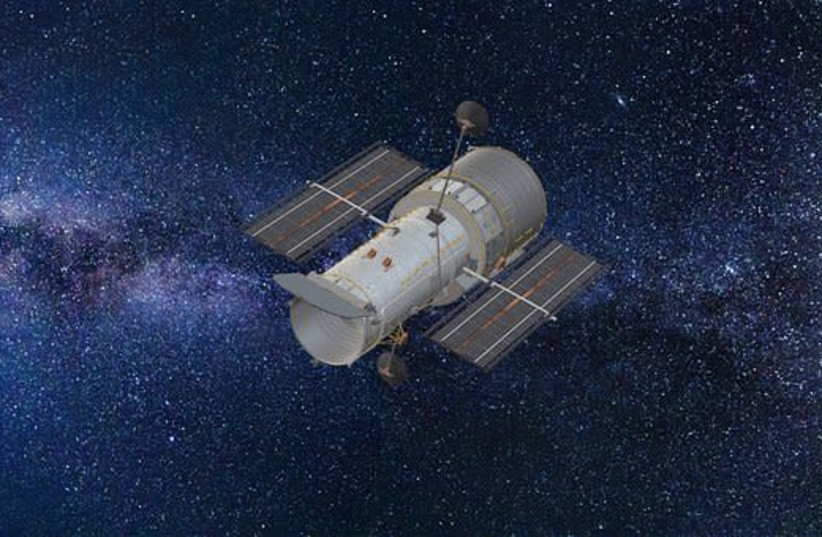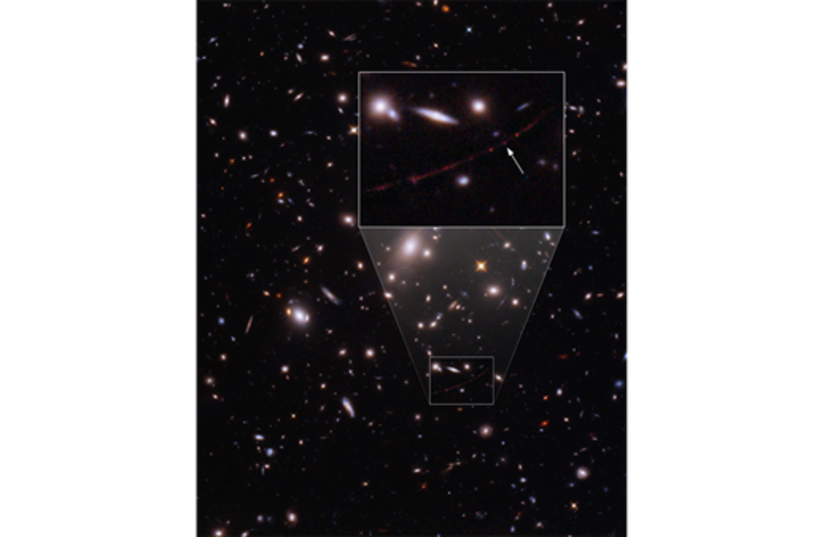Hubble Telescope detects farthest single star ever seen from Earth
The star existed during the first billion years after the Big Bang.

The Hubble Space Telescope detected the farthest individual star seen to date this week in a collaboration that included researchers from Ben Gurion University.
The newly discovered star existed within the first billion years after the Big Bang and provides insight farther back in time than we previously had after Hubble discovered a star in 2018 that existed when the universe was about four billion years old.
Since the discovery of the 2018 star, others like it have been found closer to Earth, but finding a star as far away as the new one relies on perfect conditions which are rare.
The star is so far away from Earth that it has taken 12.9 billion years for its light to reach us. At this distance, scientists have only been able to see galaxies containing billions of stars, and the smallest objects detected were star clusters. Now, they have amazingly been able to detect a single star at this distance. The breakthrough was made possible because a cluster of galaxies aligned, magnifying the star a few thousand-fold.
"We almost didn't believe it at first, it was so much farther than the previous most-distant," said astronomer Brian Welch of Johns Hopkins University in Baltimore.

Highly magnified star Earendel. The collection of yellow-looking galaxies form the massive galaxy-cluster lens that magnifies background objects lying behind it. (credit: ALYSSA PAGAN/STScI, ESA, NASA)
Massive cosmic bodies can sometimes bend spacetime and essentially act as a lens in the sky.
“The lensing phenomenon opens a door to learn about dark matter and distant galaxies,” according to BGU's Prof. Adi Zitrin, one of the study's lead researchers.
“A gravitational lens, similar to a regular lens we know from everyday life, forms regions of high magnification that are called caustics, where light rays focus. A similar feature can be seen on the bottom of a pool on a sunny day from ripples in the water. The lensing magnification at the caustic of a gravitational lens can be very high, and even reach millions,” he said.
“The current discovery has another important aspect to it because it also opens a door to learn about stars in the early universe, where we have little information on their physical characteristics and their contribution to the early ionization of hydrogen throughout the universe,” Zitrin said.
The star, named Earendel ("morning star" in Old English), is believed to be at least 50 times the mass of the sun and millions of times brighter.
Astronomers believe that Earendel will remain visible for many more years, giving them a chance to study it further. NASA's James Webb Space Telescope will be used to observe it because its sensitivity makes it the ideal tool to observe the distant star.
"With Webb, we may see stars even farther than Earendel, which would be incredibly exciting," Welch said. "We'll go as far back as we can. I would love to see Webb break Earendel's distance record."
Please recommend this page & follow the Sputniks Orbit


No comments:
Post a Comment